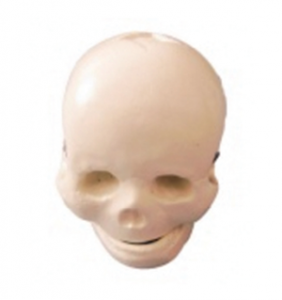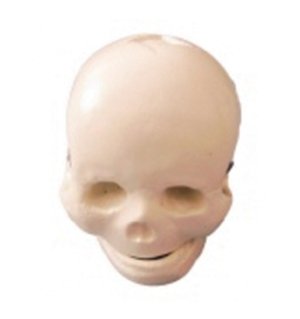ADA MED SUPPLY LIMITED
Phone:+86 19937901373
Tel:+86-0379-65160607
Email:adaanatomy@adaanatomy.com

Article tag: Baby skull model human skeleton model

Infant skull model plays a vital role in pediatric medical training, which significantly improves the training effect with its unique advantages. Here is a detailed analysis of how baby skull models can improve the effectiveness of pediatric medical training:
In pediatric medical training, practical operation is an essential link. The infant skull model allows students to carry out repeated touch, observation and simulation operations, allowing them to deepen their understanding and mastery of theoretical knowledge in practice. By simulating the operation in real scenarios, the trainees can better grasp the surgical skills and operation procedures, and improve the ability to cope with complex situations.

Infant skull model can help students to be familiar with the common deformity, injury and abnormal condition of infant skull, so as to judge the condition and formulate treatment plan more accurately in actual clinical practice. The details displayed on the model, such as the size of the fontanel and the closure of the cranial suture, are all factors that need to be focused on in the diagnosis process. Through repeated practice and observation, students are able to increase their sensitivity to these details and thus improve the accuracy of the diagnosis.
In pediatric medical training, teamwork is as important as communication. The baby skull model can be used as a team training tool to promote collaboration and communication between participants by simulating real surgery or diagnosis. When working on the model, students need to collaborate and solve problems together, and the experience helps them develop teamwork and communication skills
The application of infant skull model has also promoted the innovation of pediatric medical training teaching methods. The traditional teaching method is often based on theory teaching, but the application of model makes the teaching more vivid and intuitive. Teachers can teach through model demonstration, student operation, interactive discussion and other ways to improve students' learning interest and participation. At the same time, the application of the model also provides new possibilities for distance teaching and online education, so that more students can enjoy high-quality pediatric medical training resources.
To sum up, infant skull model with its unique advantages plays an important role in pediatric medical training, which not only improves the efficiency and effect of learning, but also enhances the practical operation ability of students, diagnostic accuracy and team cooperation ability, and promotes the innovation of teaching methods.